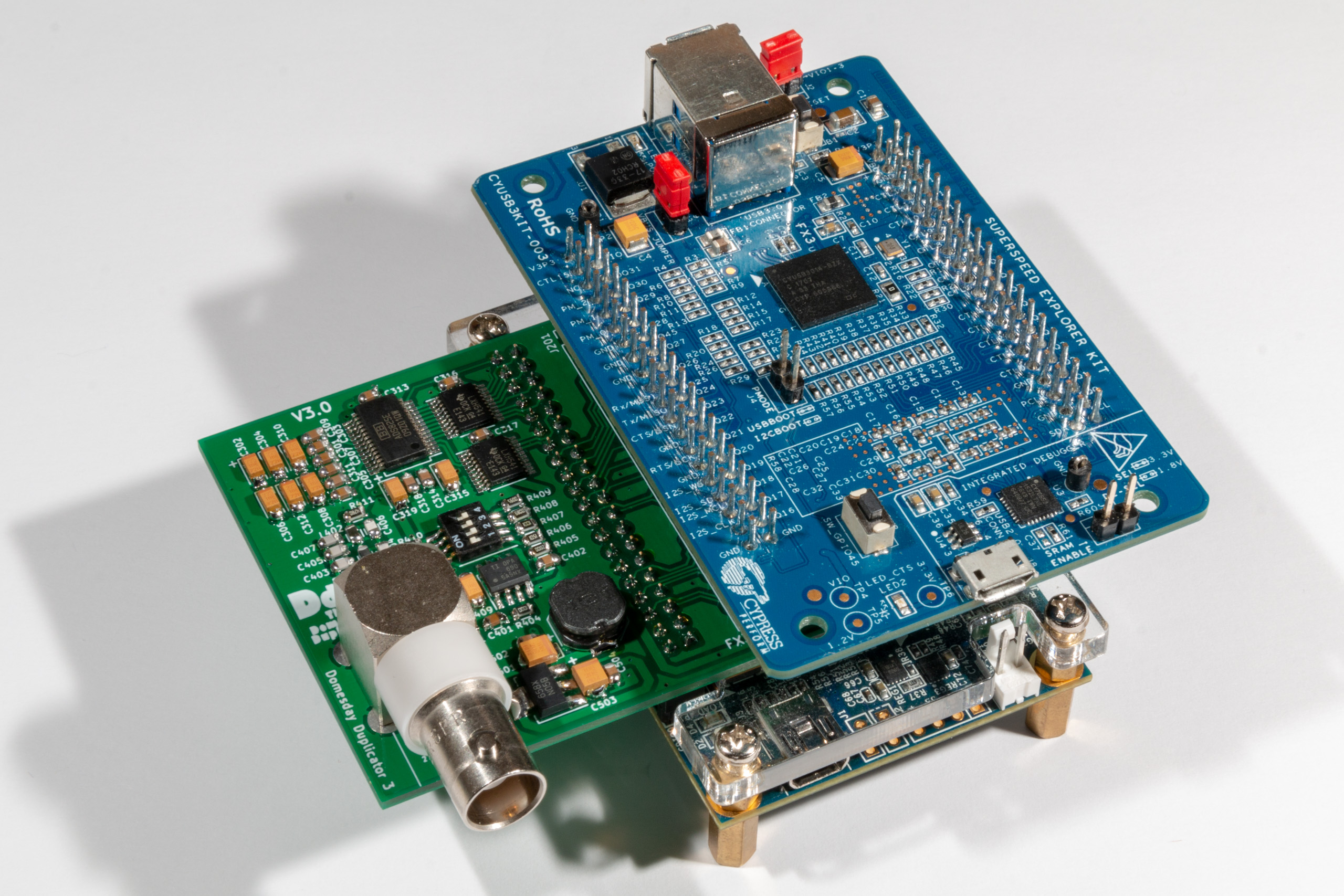-
Notifications
You must be signed in to change notification settings - Fork 21
Home
The Domesday Duplicator is intended to allow high-quality back-ups of the analogue information contained on the laserdiscs by bypassing most of the 30-year-old electronics in the players. Direct RF sampling also allows all information on the LaserDiscs to be stored (unlike conventional RGB sampling of the video output). Since AIV LaserDiscs are a combination of video, pictures, sound and data (as well as numerous VBI streams), direct RF sampling is the preferred method of preservation.
The Domesday Duplicator is a USB3-based DAQ capable of 40 million samples per second acquisition of analogue RF data.

The DomesdayDuplicator 3_0
The hardware is a USB3 based 10-bit analogue to digital converter designed to allow the backup of Domesday AIV LaserDiscs (as well as generic LaserDiscs) through the direct sampling of the RF data from the optical head (laser) of a LaserDisc player.
The hardware/software solution is designed to act as a sampling front-end to the ld-decode (software decode of LaserDiscs) project https://github.com/happycube/ld-decode and replaces the generic TV capture card to provide high-frequency sampling with 4 times the sample resolution.
There are 3 main components that make up the Domesday Duplicator:
A custom ADC board based around the Texas Instruments ADS825 10-Bit, 40MSPS analogue to digital converter. This board contains an RF amplifier and conditioner (to amplify the output from the LaserDiscs player RF tap and condition it for the single-ended ADC chip) as well as headers for both the DE0-Nano FPGA development board and Cypress FX3 SuperSpeed Explorer board. RF input is physically provided by a BNC connector.
Terasic DE0-Nano FPGA development board - The DE0-Nano is a low-cost FPGA development board containing an Altera Cyclone IV FPGA. The DE0-Nano is used to process the raw 10-bit ADC data stream and provides FIFO buffering (towards the FX3) and sample conversion from unsigned 10-bit to scaled 16-bit signed data. The FPGA provides a dual-clock FIFO; receiving ADC data at a maximum of 40 MSPS (million samples per second) and transmitting the data to the FX3 at a maximum of 60 MSPS. This is to ensure that no data is lost during sustained transfers (as RF sampling of a disc can take more than 40 minutes).
Cypress FX3 SuperSpeed Explorer board - The FX3 is a low-cost USB3 development board from Cypress. The FX3 is used to buffer data from the FPGA and provide it to a host computer using USB3. USB3 is required for this application due to the high-data bandwidth necessary for high-speed/high-resolution sampling.
DomesdayDuplicator Wiki - All content provided under the Attribution-ShareAlike 4.0 International (CC BY-SA 4.0) license.